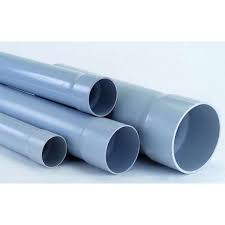Onion Powder Production and Sales (Local and Export) in Nigeria; The Feasibility Report.

Onion (Allium cepa) is a vegetable crop grown almost all over the world. It is grown mainly for its bulb, which is used in every home, almost daily. It is rarely used as a sole dish or in large quantities. It’s main use lies in flavouring and seasoning of a wide variety of dishes. Its popularity is due to it’s aromatic, volatile oil, the allyl-prophl sulphide which imports a cherished flavour to food.
As a constituent of a meal, both the green leaves and bulbs can be eaten raw, cooked or flood, or in soups and salads. Onion also has an important role as a medicinal herb in many communities, and is claimed to minimize high blood pressure and other heart diseases due to it’s favourable action on the elasticity of blood vessels. As an item of world trade, onion ranks second in importance after tomatoes among the vegetables.
Onion is grown widely during the wet and dry seasons. However yields are much higher during the dry season because of fewer incidences of pests and diseases. Prices of onion tend to oxalate during the dry season before harvest begins, due largely to the inability of the farmers to store the highly perishable crop.
Onion is one of the most commonly consumed vegetable crops in Nigeria and around the world. In 2012 alone, an estimate of about 240, 000 tons of green onions and 1, 350, 000 tons of dry onions were produced in Nigeria, with the country ranking sixth amongst the top ten producers of green onions in the world, and 11th in terms of dry onions production, with China and Japan respectively on the No. 1 and 2 spots for green onions production, and China and India on the No. 1 and 2 spots when it comes to dry onions production.
Grown mostly in Kano, Kaduna, Jigawa, Sokoto, Plateau, Bauchi and Kebbi States, the Aliero Community, a local council area in Kebbi State, Nigeria, can lay claim as its home in Nigeria.
The harvested onions are preserved in silos because of the absence of modern ways of preserving them. It is sad that most other Nigerian onion producing communities such as Aliero lack modern processing and preservation plants.
Onions are perishable commodity and cannot be stored for a long time after harvest in a ordinary conditions. Onion can be processed into a wide variety of products. Minimally processed ready to use or ready to cook fresh onions, onion paste, dehydrated onion flakes, onion powder, onion oil, onion vinegar, onion sauce, pickled onion, onion wine and beverage etc. The demand for the processed products is increasing day by day due to its convenience to handle and use.
Onion powder is used chiefly as a constituent in various food products i.e. this is sold to manufacturing concerns as a industrial raw material, hotels, restaurants, caterers and domestic consumption. Onion powder has also good export market. Therefore, has a very good scope for new entrants.
This report is to examine the financial viability or otherwise of establishing a onion powder production and packaging plant in Nigeria.
The production capacity of the proposed business is twelve (12) tons for onion powder per day of three (3) shifts of eight (8) hours each working at eighty percent (80%) of the installed capacity in the first, second, third, fourth and fifth year of operations respectively.
Table of Contents
EXECUTIVE SUMMARY 1.0 Business Overview 1.1 Description of the Business 1.2 Vision and Mission Statement 1.3 Business Objective 1.4 Value Proposition 1.5 Critical Success Factor of the Business 1.6 Current Status of Business 1.7 Description of the Business Industry 1.8 Contribution to Local and National Economy 2. Marketing Plan 2.1 Description of product 2.2 Product Packaging and delivery 2.3 The Opportunity 2.4 Pricing Strategy 2.5 Target Market 2.6 Distribution and Delivery Strategy 2.7 Promotional Strategy 2.8 Competition 3. Production Plan 3.1 Description of the Location 3.2 Raw Materials 3.3 Production Equipment 3.4 Production Process 3.5 Production Cost 3.6 Stock Control Process 3.7 Pre-Operating activities and expenses 3.7.1 Operating Activities and Expenses 3.8 Project Implementation Schedule 4.0 Organizational and Management Plan 4.1 Ownership of the business 4.2 Profile of the promoters 4.3 Key Management Staff 4.3.2 Management Support Units 4.4 Details of salary schedule 5. Financial Plan 5.1 Financial Assumption 5.2 Start- up Capital Estimation 5.3 Source of Capital 5.4 Security of Loan 5.5 Loan Repayment Plan 5.6 Profit and Loss Account 5.7 Cash Flow Analysis 5.8 Viability Analysis 6.0 Business Risks and SWOT Analysis 6.1 Business Risks 6.2 SWOT Analysis
Project Specification:
Additional Info
Get this Report
Direct bank transfer
To order the report, Please do pay the sum of ₦100,000 into
Account Name : Foraminifera Market Research Ltd
Account Number : 274 20 569 37
Account Name : Foraminifera Market Research Ltd
Account Number : 101 76 603 95
Account Name : Foraminifera Ventures
Account Number : 011 66 066 32
Make your payment directly into our bank account. Please use your Order ID as the payment reference. Your order will not be shipped until the funds have cleared in our account.
Instructions
After payment call us on 01 -29 52 413 / 08033782777 or email us at foraminiferamarketresearch@yahoo.com with the payment details. After payment confirmation, the soft copy of the report would be sent to you within 24 hours.



